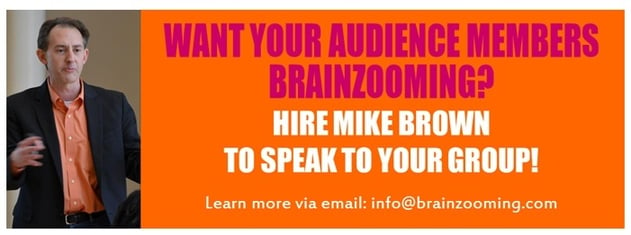This week's "Inside the Executive Suite" from the Armada Executive Intelligence Brief newsletter focused on an intriguing article from Inc. online. The article identified reasons why major companies invest significant, seemingly unjustified amounts on startup businesses with scant revenues and no discernible business models.
The original article from Inc. by Dev Aujla claims major companies use these acquisitions as a new variation on research and development. A major corporation may be able to pick up a whole startup for many millions of dollars. Despite seeming like an excessive figure, the purchase price could still put the major corporation dollars ahead versus developing whatever the startup offers on its own.
Aujla highlights three reasons major companies target these acquisitions. They are typically looking for:
1) New learnings and research
2) The opportunity to more easily plug a hole in their product or market portfolio
3) Talent that moves them ahead in new areas
 The folks at the Armada Executive Intelligence Brief used Aujla’s three items and offered strategic thinking questions for each of the three areas.
The folks at the Armada Executive Intelligence Brief used Aujla’s three items and offered strategic thinking questions for each of the three areas.
The strategic thinking questions provide a way for companies, even ones far beyond startup status, to develop strategies boosting their chances for acquisition or spin-off opportunities. Armada agreed to let us share the questions here for each of the three areas.
The remainder of this post with the strategic thinking questions comes directly from the Armada Executive Intelligence Brief newsletter and its “Inside the Executive Suite” edition.
Strategic Thinking Questions for Crafting Startup Strategy in Any Business
1. Developing New Learnings and Research
Many companies claim to be learning organizations. This is often professional development jargon for “educating the staff.” While education is important, it won’t prompt another company to pay a premium simply because your employees have current training.
Try this strategic flip, though. Instead of characterizing your company as a learning organization, characterize it as a "discovering" organization. With that change in strategic perspective, evaluate where you stand today and where you would like to be a year from now:
- What is our organization discovering that no other party knows?
- How many people inside our organization are hell-bent on discovering new technologies, capabilities, and possibilities to bring to market?
- Who are the people and organizations outside our own that we are collaborating with on major discovery efforts?
- What discoveries can we make happen at lower cost, with less risk and red tape, and at a markedly faster pace than bigger firms can?
These answers should stretch your organization to move beyond learning what everyone else knows into discovering breakthrough knowledge with real value to outside parties.
2. Filling Holes in Markets, Audiences, or Product Portfolios
Aggressively examine market, audience, and product strategy gaps at other organizations to discover missing elements you can fill through your own exploration.
- Which organizations have bigger, more sweeping product visions than ours? What gaps exist in their product portfolios we might be able to supplement through our narrower focus on product and market development?
- What markets adjacent to ones we serve include competitors with missing elements in their market, audience, or product mixes?
- Are there companies in related or even far removed categories lacking strong platforms for innovation that our discovery strategy could readily address?
Don't think about fixing everything with these discovery efforts. Focus on the minimum standard product or market development allowing another organization to readily fill a gap by eventually acquiring what you are doing.
3. Gaining New Talent
Consider how your organization pursues new talent. Is there a deliberate attempt to hire the types and caliber of people most ready to help your organization discover and grow along a valuable path?
While you may be hiring to clear standards, evaluate - if you haven't already - who will be the "explorers" you need to discover the knowledge, markets, audiences, and products with the greatest potential value. Think about these questions:
- What deliberate actions are we taking to bring on extraordinary discoverers?
- What steps are we taking to identify and target emerging talent, i.e., people who aren't as well known, but are about to become rock star talents?
- What relationships are in place (or can we develop) with educational institutions that are doing new work and introducing new programs in areas of discovery for our organization? (BTW, you may need to be looking at grade schools, middle schools, and even home schooling programs.)
It’s clear that answering these questions won’t lead to simply placing online ads and waiting for your email inbox to fill with too many resumes! – via “Inside the Executive Suite”
If you enjoyed this article, subscribe to the free Brainzooming blog email updates.





